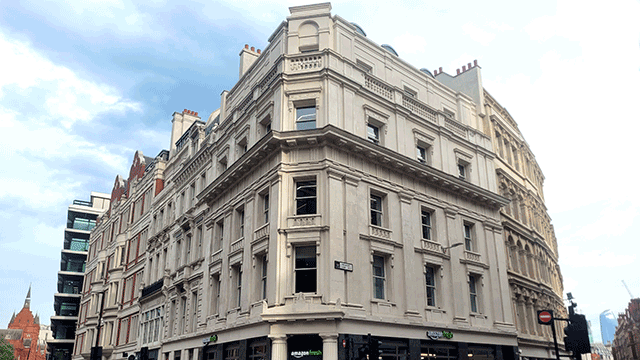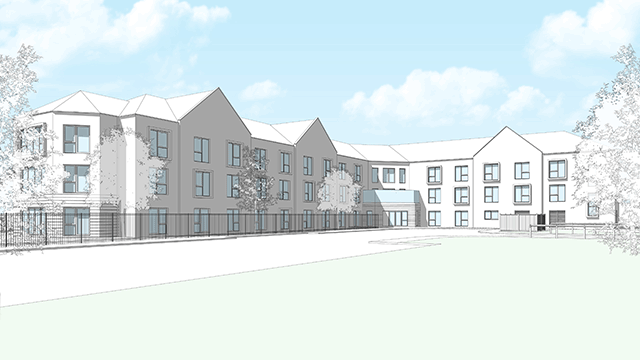John McRae finds optimism that the M25 towns of Dartford and Bromley will soon be known for more than just their motorway positions.
With a proposed regional shopping centre, the Queen Elizabeth II Bridge over the River Thames, one of the largest business and industrial parks in the country, a planned university campus, and now almost certainly an international passenger station – Dartford’s emergence as a strategic location in the South East has been remarkable.
Dartford is beginning to throw off its image of industrial dereliction, worked-out lime quarries and hospitals on desolate Thamesside marshes.
The omens for an international passenger station (IPS) on the Channel Tunnel rail route look good. In January, transport secretary John MacGregor told the Commons that an IPS at Ebbsfleet, near Northfleet Station, seemed a better M25 parkway station, subject to satisfactory financing, than a rival M25 parkway station at Rainham, Essex.
The station, costing about £75m, would be built on Blue Circle-owned land and would be the culmination of three years’ effort by Blue Circle, which has assembled a high-powered group of consultants. The group includes David Lock – recently appointed chief planning advisor at the DOE.
Mark Pennington, Blue Circle’s Kent development manager, says that joint-venture partners are now being sought for the IPS and a mixed commercial development. This could include retail, offices, and exhibition and conference space. The IPS will need a large car park and this will provide steady income from the outset.
Although it will be several years before a “Euro-Lille”-style IPS at Ebbsfleet is ready, thought is already being given to improved road access for the proposed site. Michael Wilson, director of development at Dartford borough council, envisages a spur road off the planned South Thamesside development route. The council is also keen to provide good public transport.
One aspect of the IPS which has not received sufficient attention so far is a proposal for a Union Metro, linking the IPS and Northfleet station with Stratford and the Royal Docks via the north Kent railway lines and a new tunnel under the Thames at Woolwich. The concept was backed by Union Railways in its report to Government last year. Dartford is a member of a consortium which is studying the viability and implications of the proposal. Other members includes London Transport, Network South East and the LDDC.
The first stage of the development route, the Dartford northern bypass, opened last November, and has much improved access to Belvedere and Erith. More important, the bypass has opened up sites for the new campus of the University of Greenwich, on which preliminary work will start this year, and for a possible science park – a longer-term development being promoted by the council, the Wellcome Foundation, the university and South East Thames Regional Health Authority.
The university is aiming to attract 10,000 students, 2,000 of whom will be in residence, and a total development of more than 1m sq ft. The campus will extend on to 135 acres of green belt, but it was backed by the Environment Secretary on strategic grounds. Like the science park site at Joyce Green Hospital, it is located west of the Queen Elizabeth II Bridge.
The four landowners promoting the science park won EU funds for research into the development’s viability and for the formulation of a business plan to gain business support. The research is expected to be completed at Easter. However, David Simpson of Caxtons maintains that talk of a science park is “pie in the sky” at present.
Bluewater, Blue Circle Properties’ 1.6m-sq ft regional shopping centre, on which work will start this year, has already had an effect on the area’s retail market.
Graham Mitchell of Caxtons says: “Shopping in Dartford is in limbo. There is a shadow hanging over Dartford and north-west Kent. There are very few multiples actively looking for space.” But he believes that Bluewater will do well and will be good for the area. He suggests that Dartford will have to evolve into niche retailing to service office workers and campus students in order to maintain its viability when faced with the power of its mighty neighbour. Bluewater, which has lined up heavyweight tenants such as Allders, House of Fraser, C&A, Boots and Tesco, is projecting sales of £600m pa from its claimed catchment of 6.5m shoppers.
Mitchell is encouraged by what he describes as a trend for firms to extend their area of search for offices from the Sevenoaks area up to Dartford and the Thames.
But, at Blue Circle’s Crossways, which has consent for over 900,000 sq ft of offices, the only office letting so far is to Rochester Instruments, which last year took 6,000 sq ft at a headline rent of £15.50 per sq ft. Blue Circle is reticent about giving precise details.
Simpson reports that demand for industrial space is creeping up for units of between 4,000 sq ft and 10,000 sq ft. And medium-sized firms looking for 10,000 sq ft to 25,000 sq ft are also coming back into the market.
Recent industrial transactions at Crossways have included 15,000 sq ft to Johnson & Jorgensen and 25,000 sq ft to Label King. Both deals achieved about £6 per sq ft, according to Caxtons.
Although market conditions are currently slow, Dartford is on the brink of a major boost to its economy. And, as this report was going to press, a planning application was lodged for a passenger terminal at Dartford International Ferry Terminal, Crossways. Such a service would be a new departure – the freight service to Holland folded two years ago when the operator lost a major contract.










